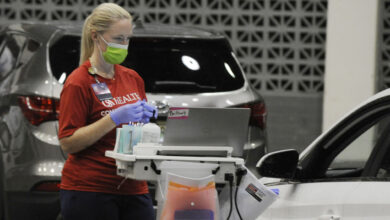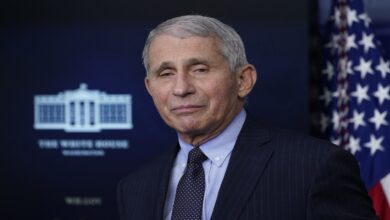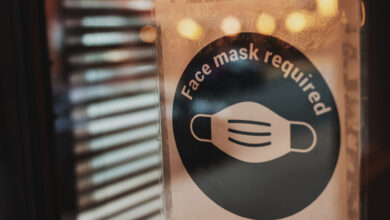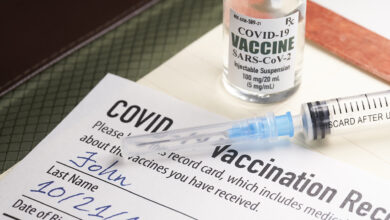Inside the grisly practices of grave-robbing doctors

In April 1788, a medical student named John Hicks was dissecting a body at New York Hospital, then located on the corner of Broadway and Pearl Street.
According to legend, a group of local children gathered at the building’s window to gawk at the procedure. Annoyed at the intrusion, Hicks supposedly grabbed a severed limb and waved it at the kids, yelling, “This is your mother’s arm! I just dug it up!”
As it happened, one of the kids had recently lost his mother, and he ran home to tell his dad what he’d seen at the hospital. Enraged, the father grabbed a shovel and headed to the graveyard, where he dug up his wife’s grave to find the coffin empty.
The father notified others, and a mob soon marched on the hospital, touching off violent unrest that lasted for two days. The group ransacked the hospital, destroying equipment and dragging dissected bodies out into the street to be burned or reburied. The mob’s numbers ultimately swelled to 5,000, according to some reports.
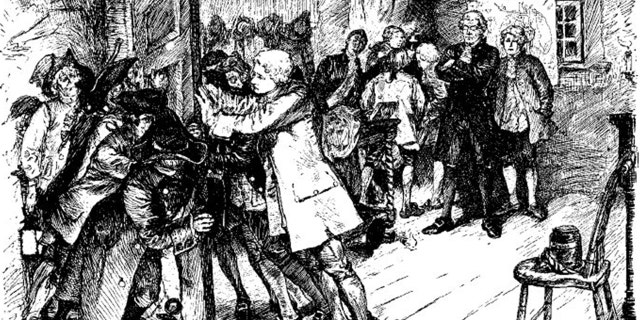
The Doctor’s Riot of 1788 (depicted above) was one of at least 17 anatomy uprisings across the US, sparked by outrage that doctors were digging up the dead.
(Public Domain)
AMERICANS ‘DO NOT NEED’ COVID-19 BOOSTER SHOT, FDA, CDC, SAY
At one point, Alexander Hamilton intervened to try and calm the crowd. Eventually the militia was called in and opened fire, killing 20 in some accounts.
This so-called “Doctor’s Riot” was just one of at least 17 anatomy uprisings across the country, which were driven by a widespread problem at the time — the public’s distrust of medical schools and where exactly they got their bodies to dissect.
The public had good reason to be upset. As detailed in the new book, “The Icepick Surgeon: Murder, Fraud, Sabotage, Piracy and Other Dastardly Deeds Perpetrated in the Name of Science” (Little, Brown and Company), out Tuesday, scientists throughout history often operated on the wrong side of morality.
Author Sam Kean says these stories interested him more than those about common criminals.
“These people were taking a good thing — the pursuit of knowledge — and twisting it in this dark way,” he told The Post.
Grave-robbing, which fueled the anatomy riots, was a common, distasteful practice driven by necessity at the time. Doctors and med students, desperate for corpses to dissect, had few legal means to obtain human specimens, and so they turned to stealing bodies from graveyards. Corpses were pilfered from New York’s African American cemeteries and potter’s field, as well as Trinity Church.
“The number of bodies being stolen was enough that a lot of people were affected,” Kean says, noting that the bodies of poor people were disproportionately dug up.
In the UK, arguably the most famous case involved John Hunter, a surgeon who would serve as the inspiration for Robert Louis Stevenson’s “Dr. Jekyll and Mr. Hyde.”
OVERALL CANCER DEATH RATES DECLINING IN US, REPORT FINDS
Hunter reportedly dissected or observed the dissection of 2,000 corpses — one body every two days.
Some of these bodies he acquired himself; other times he paid criminals known as “resurrectionists” to get them. He even had a hidden entrance at the rear of his house just for delivery of ill-gotten bodies.
“Grave-robbers usually worked in teams,” the author writes. Some would rob mass graves, while others deployed a female spy to linger near hospitals and report on deaths. The criminals would then attend the burial and note the location of the plot, returning at night to exhume the body.
Families of the deceased tried to stifle criminals by deploying creative countermeasures, including booby-trapping coffins so they exploded when tampered with.
“Some families would arrange twigs, stones, or oyster shells into a pattern on the surface of the plot, so they could tell if the dirt had been disturbed,” the author writes.
The UK and the United States ultimately passed laws providing bodies for medical students. (New York passed one in 1854 gifting unclaimed bodies from the public morgue.)
CLICK HERE TO GET THE FOX NEWS APP
The problem, however, has not gone away. One 2016 analysis discovered that New York City’s medical schools ended up with 5 percent fewer bodies than they required.
In some places, a robust “red market” for bodies and body parts still thrives, in which a corpse can fetch up to $200,000. In 2004, for example, a Staten Island funeral director was busted for selling bodies to the Army to be used in munitions experiments.
“One thing I hope people take away from the book — especially people involved in science — is to think a little more about the ethics involved,” the author says. “That’s easy to say but hard to do in practice sometimes.”
Click here to read more on the New York Post.
Source link



